|
Page 2 of 2
Distortion
The level of distortion is quite low throughout the zoom range. At 100mm there's a
tiny bit (0.23%) of barrel distortion changing towards moderate pincushion distortion at
200mm (0.64%) and 300mm (0.8%).
100mm:
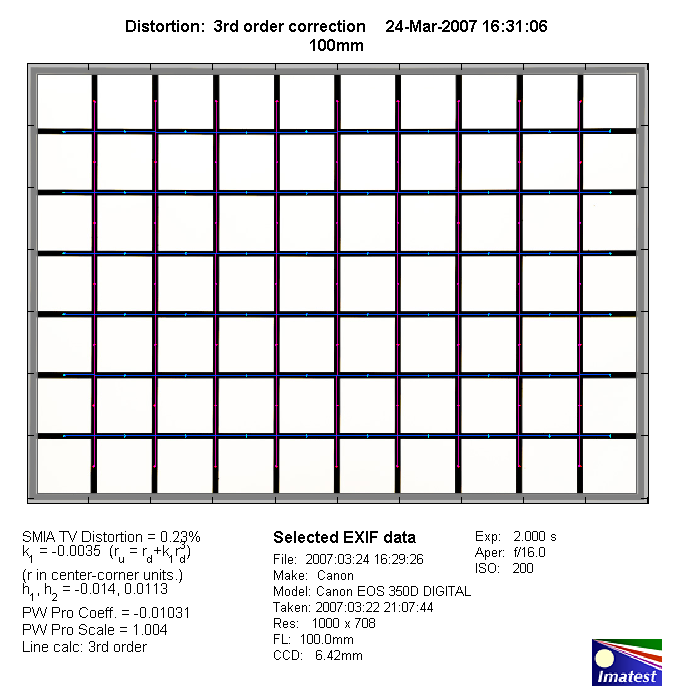
200mm:
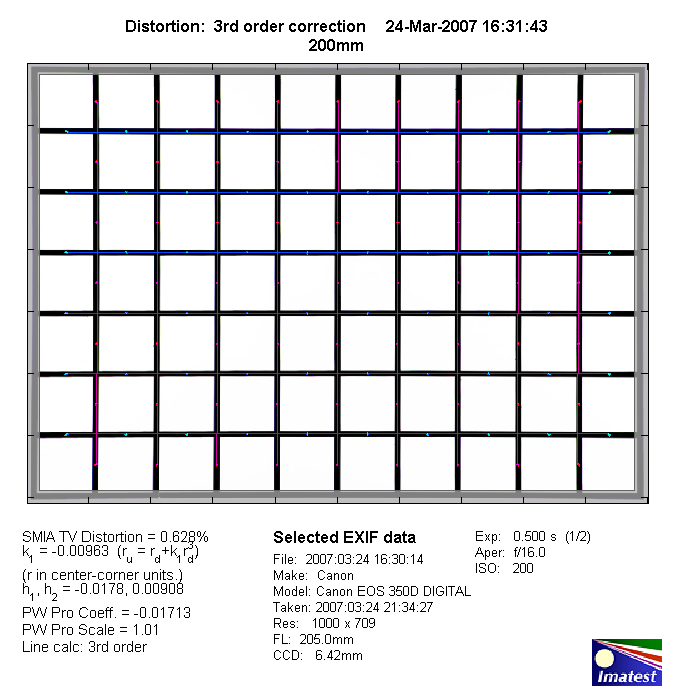
300mm:
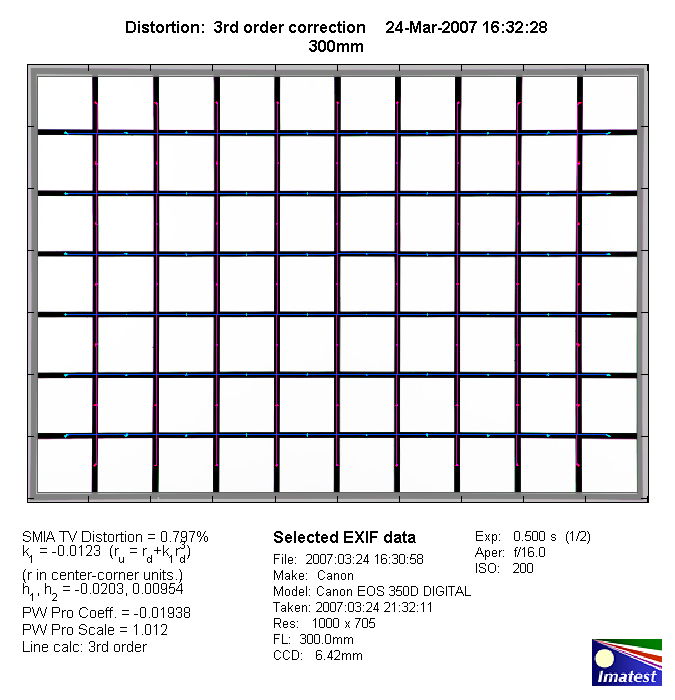
Vignetting
Used on an APS-C DSLR the vignetting is very well controlled thanks to the sweet spot
advantage here (1.6x crop factor). At 300mm f/5.6 the issue is marginally more
pronounced but even here the vignetting will be rarely field relevant. At all
other settings vignetting is negligible.
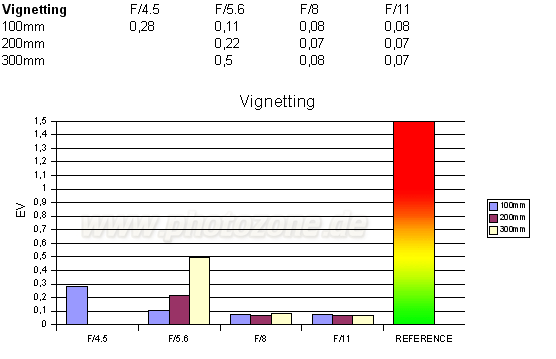
MTF (resolution)
As to be expected the EF 100-300mm f/4.5-5.6 USM delivered a good but not overly
exciting performance in the MTF lab. At 100mm the resolution is very high with
excellent figures throughout the tested aperture range. Moving on the 200mm there's
already a slight decrease in performance specifically at wide-open aperture.
Nonetheless the lens remains usable here. At 300mm the lens is rather soft at f/5.6
but stopping down to f/8 or f/11 lifts the quality substantially. At wide-open
aperture the contrast level is also somewhat reduced here.
It is also worth to mention that the lens showed a very good centering - a rare
occurrence in this lens class which does surely also originate in the IF design.
Please note that the MTF results are not directly comparable across the different systems!
Below is a simplified summary of the formal findings. The chart shows line widths per picture height (LW/PH) which can be taken as a measure for sharpness.
If you want to know more about the MTF50 figures you may check out the corresponding Imatest Explanations
Chromatic Aberrations
Lateral CAs (color shadows at harsh contrast transitions) are a weakness of the EF 100-300mm f/4.5-5.6 USM.
At 100mm the issue is surprisingly negligible but at 200mm and more so at 300mm the CAs are rather
extreme with peaks around 1.4px (200mm) and 2px (300mm) at the image border. This is a critical level which
is easily visible in field shots. Nonetheless lateral CAs can be corrected or at least reduced via
imaging tools like Photoshop or various RAW converters so it is no principal show-stopper if you're willing
to invest some efforts here.
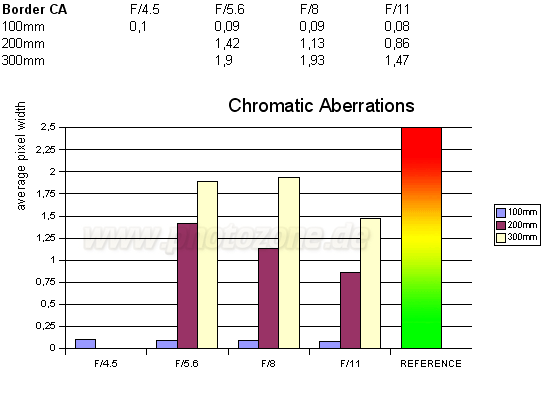
Verdict
In terms of optical performance the Canon EF 100-300mm f/4.5-5.6 USM is about in line with other consumer
grade tele zoom lenses. The resolution figures are excellent and 100mm but unsurprisingly there's a penalty
at longer focal length specifically at 300mm @ f/5.6. At 200mm and more so at 300mm you should stop down
a little to lift the resolution and contrast level. Distortions and vignetting are usually nothing to
worry about whereas CAs are a significant although largely correctable weakness at 200mm and 300mm.
On the positive side the tested sample showed a very good center (lens alignment) which is quite rare for
a lens in this class. The mechanical quality is a step up from the typical kit zoom - this is most obvious
in the IF (internal focusing) design and the very fast ring-type USM drive. Unless you can afford the
(substantially better) EF 70-300mm f/4-5.6 USM IS the EF 100-300mm f/4.5-5.6 USM is a remains good choice
in the sub-300€/US$ tele zoom lens league. Just don't expect any wonders at longer focal lengths.
|